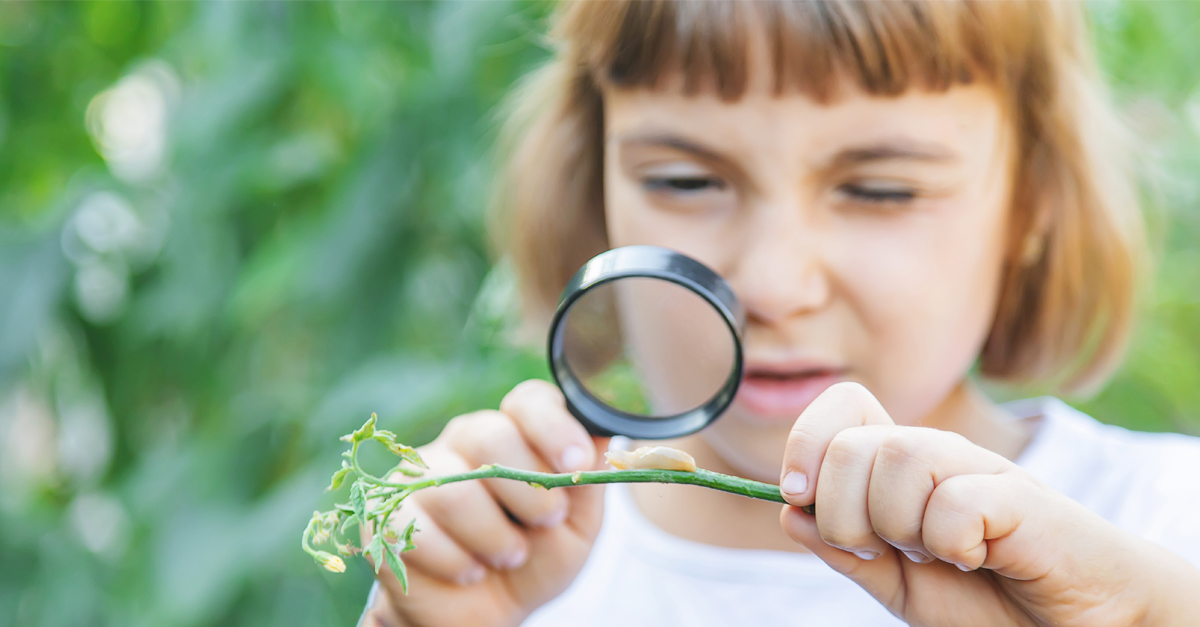
Many times in life, options are presented as either/or when really they can easily be both/and. Exploration versus instruction is one such battle. Advocates of exploration allow everything to be a discovery, with the idea that students will somehow magically know the right questions to ask. Meanwhile, proponents of instruction will give lectures and PowerPoints ad nauseam and then be surprised when all that instruction breaks down the first time a real-life situation is presented. As is so often the case, the truth lies in the middle. Both are valuable and it’s the responsibility of the parents or instructors to provide a proper balance of both.
Here’s an example:
My wife and I took our kids hiking in the beautiful forests of northwestern Pennsylvania. The old-growth forest boasts hemlocks that were mere saplings when William Penn first received the Charter for Pennsylvania from King Charles II in 1681. Along the way, we did a lot of “noticing” stuff. “Look at the color of this mushroom!” was a common cry. And let me tell you, the number, varieties, and colors of fungi were indeed worthy of exclamation! The size of trees received their due share of interest. One tree had blown down and fallen across the trail in a previous storm. Some kind soul had then carried a chainsaw up the mountainside to clear the path, thereby giving us an excellent cross-section of the tree trunk. My wife counted the rings on that tree—all 160 of them. And that was from about 20 feet up the trunk! Different types of trees, their leaves, the moss, the rocks, and the weather were all discussed and given a bit of reflection and attention.
But ANIMALS ruled the day!
From the moment we stepped on the trail, little eyes were scanning the leaves and underbrush for any trace of a frog, a toad, a salamander, even a worm would do. Several of these small animals were found, and with great enthusiasm, they were stalked and caught. On the first half of our two-hour hike, we saw only a few creepy crawlies and had the opportunity to examine them from the palm of our hands. The spirit of exploration was powerful, but there was waning interest due to a lack of finding.
It was then that my wife stepped in with a small bit of instruction that changed everything.
“Try flipping over rocks and logs,” she said. And then she demonstrated with a nearby rock. Under that rock teemed an entire ecosystem hidden from the world of the casual observer. Bugs, beetles, ants, and worms thrived in the damp earth under the rock. She demonstrated with a log next and a small salamander scurried away to shouts of delight. Soon our children caught on and were skillfully checking under rocks and logs along the trail and our bounty of scientific discoveries soared. Our rule stating that each specimen could be held only a moment before being deposited back in its environment was no longer as much of a problem because they knew they could find others if they only looked a little deeper and used the instruction their Mom provided.
The moral of the story came later as my wife and I were talking about how great that day was and how we really wanted to provide more times of outdoor exploration. In discussing how best to do that, we also realized it was not just the exploration but also the instruction that helped enhance the exploration. So now, we’re on the hunt for a resource to help us explore the outdoors with purpose and therefore gain a higher level of enjoyment because we will better understand our exploration.
If you’re on the hunt for a math, spelling, or grammar curriculum that gives you this kind of experience, then I suggest you check out our programs. Each is designed to give instruction and then let the student practice and explore those concepts as they work toward mastery. We learn best when we find the balance between instruction and exploration.
We Are Here to Help
If you have questions about our curriculum, we are here to help!
Get in Touch



Leave a Reply